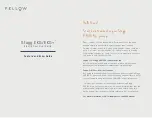
11
MAINTENANCE
Cleaning Instructions
WHAT TO DO IF SURFACE RUST APPEARS
Metal utensils should never be used as they will scratch
the surface of the equipment and rust may begin to form.
To remove surface accumulation of rust from the inadver-
tent use of such utensils, the following procedure may be
used.
1. Use undiluted white vinegar with a non-abrasive
scouring pad (plastic) or cloth on the affected area to
remove the rust stain. The appliance should not be
heated and remain at room temperature during the
entire cleaning process.
2. If the stain resists removal, additional exposure time
with vinegar may be required, to a maximum of one
hour.
3. Thoroughly wash all of the vinegar away with fresh
clear water. Dry the surface completely and allow
one hour before using the appliance to cook.
Following daily and period maintenance procedures will
prolong the life for your equipment. Climatic conditions -
salt air - may require more thorough and frequent cleaning
or the life of the equipment could be adversely affected.
STAINLESS STEEL
To remove normal dirt, grease or product residue from
stainless steel, use ordinary soap and water (with or with-
out detergent) applied with a sponge or cloth. Dry thor-
oughly with a clean cloth. Never use vinegar or any other
corrosive cleaner.
To remove grease and food splatters or condensed va-
pours that have baked on the equipment, apply cleanser
to a damp cloth or sponge and rub cleanser on the metal
in the direction of the polishing lines. Rubbing cleanser
as gently as possible in the direction of the polished lines
will not mar the finish of the stainless steel. NEVER RUB
WITH A CIRCULAR MOTION.
Soil and burn deposits which do not respond to the above
procedure can usually be removed by rubbing the surface
with SCOTCH-BRITE™ scouring pads or STAINLESS
scouring pads. DO NOT USE ORDINARY STEEL WOOL
as any particles left on the surface will rust and further
spoil the appearance of the finish. NEVER USE A WIRE
BRUSH, STEEL SCOURING PADS (EXCEPT STAIN-
LESS), SCRAPER, FILE OR OTHER STEEL TOOLS.
Surfaces which are marred collect dirt more rapidly and
become more difficult to clean. Marring also increases
the possibility of corrosive attack. Refinishing may then
be required.
TO REMOVE HEAT TINT
Darkened areas sometimes appear on stainless steel sur-
faces where the area has been subjected to excessive
heat. These darkened areas are caused by thickening
of the protective surface of the stainless steel and is not
harmful. Heat tint can normally be removed by the forego-
ing, but tint which does not respond to this procedure calls
for a vigorous scouring in the direction of the polish lines
using SCOTCH-BRITE™ scouring pads or a STAINLESS
scouring pad in combination with a powdered cleanser.
Heat tint action may be lessened by not applying or by
reducing heat to equipment during slack periods.
All food contact surfaces must be thoroughly drained and
flushed prior to cooking in the kettle.
CONTROL PANEL
The textured control panel should be cleaned with warm
water and mild soap. Never use an abrasive cloth or steel
wool. Never use cleaning solvents with a hydrocarbon
base.
Maintenance Schedule
Contact the factory, the factory representative or a local
service company to perform maintenance and repairs.
Daily:
1. Wash exposed cleanable areas.
Monthly:
1. Blower wheel inlet and motor air vent should be
cleansed if an accumulation of dust or lint is obvious.
Twice a Year: (minimum)
1. Have an authorized service person clean and adjust
the unit for maximum performance.
2. The unit venting system should be examined and
cleaned.
3. Grease the screw jack tilt mechanism via the lubricat-
ing nipple. Use Petro-Canada type OG-2 or equiva
-
lent.
Annually:
1. Have an authorized service person inspect the screw
jack assembly for wear. The screw must be replaced
immediately if the end play has reached 0.019”
[0.5mm].































